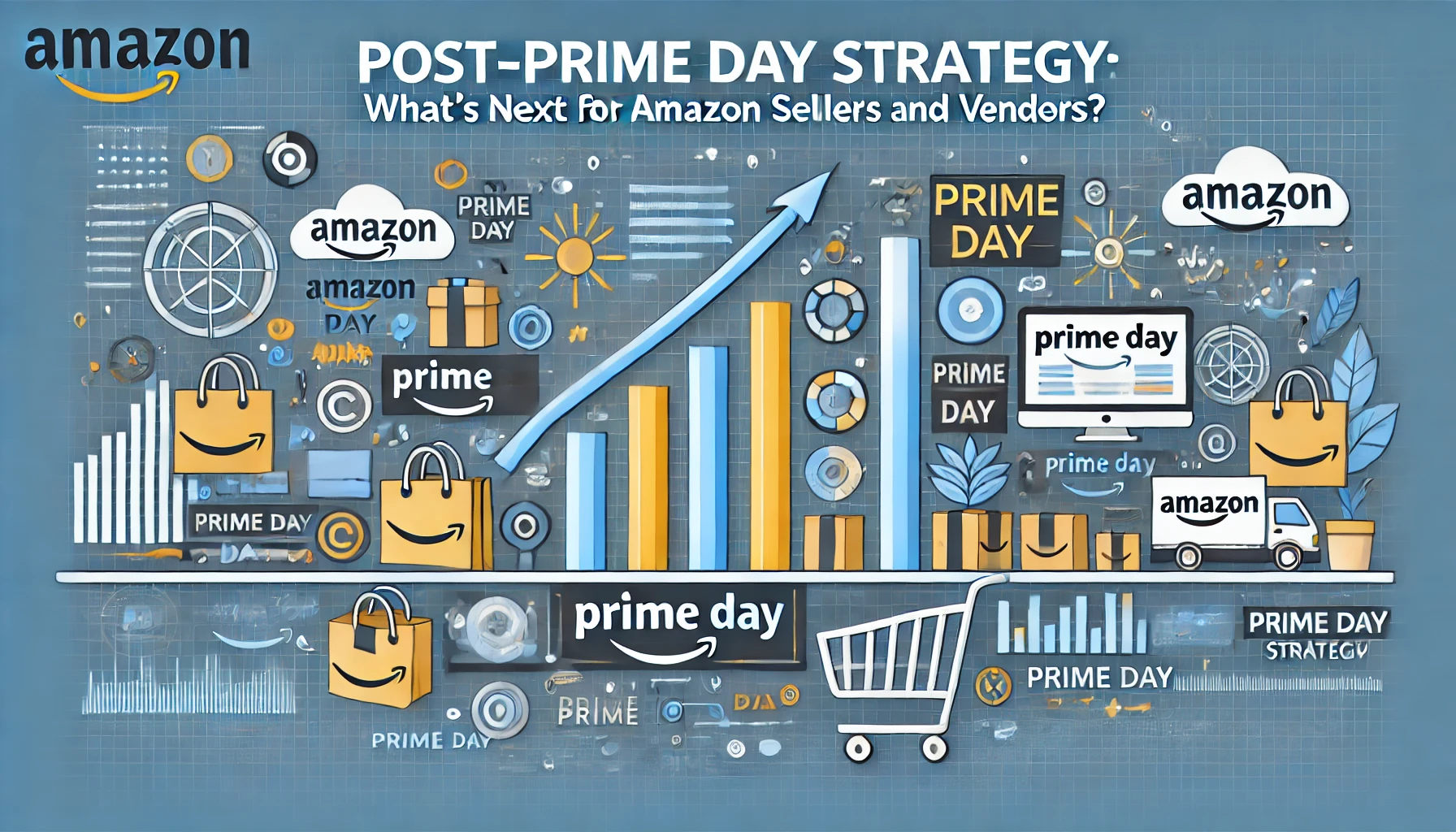Introduction: Prime Day has come and gone, leaving in its wake a whirlwind of sales, promotions, and customer engagement. While the excitement may have peaked, now is the critical time for both Amazon sellers and vendors to leverage the momentum and insights gained from this major event. Here’s a comprehensive guide on what to do next to maximize your post-Prime Day success.
1. Analyze Your Sales Data Prime Day provides a wealth of data. Delve into your sales reports to understand what worked and what didn’t. Key metrics to analyze include:
- Top-Selling Products: Identify which items performed best and why.
- Traffic Sources: Determine where your traffic came from—was it organic search, paid ads, or social media?
- Conversion Rates: Compare conversion rates across different products and marketing channels.
2. Manage Inventory Levels With the surge in sales, your inventory might be depleted. Ensure you:
- Restock Bestsellers: Quickly reorder items that sold out or are running low.
- Assess Slow Movers: Evaluate products that didn’t perform well and consider discounts or promotions to clear out inventory.
3. Engage with New Customers Prime Day attracts a lot of new shoppers. Keep these customers engaged by:
- Follow-Up Emails: Send thank-you emails, request reviews, and offer discount codes for future purchases.
- Loyalty Programs: Introduce loyalty programs or exclusive offers to encourage repeat business.
4. Optimize Your Listings Post-Prime Day is the perfect time to refine your product listings based on insights gained. Focus on:
- Keywords: Update your SEO strategy with high-performing keywords.
- Product Descriptions: Enhance descriptions with clear, concise, and compelling content.
- Images and Videos: Ensure your visuals are high-quality and showcase your products effectively.
5. Review and Adjust Your Advertising Strategy Evaluate the performance of your Prime Day ads and adjust your campaigns accordingly:
- Budget Allocation: Redirect budget to high-performing ads and pause underperforming ones.
- Targeting: Refine your audience targeting based on Prime Day data.
- Ad Copy and Creative: Test new variations of ad copy and creative elements.
6. Plan for the Next Big Event While Prime Day is significant, the holiday season is just around the corner. Start preparing now by:
- Marketing Calendar: Develop a marketing calendar for upcoming events and holidays.
- Promotions and Deals: Plan promotions and special offers to keep the sales momentum going.
- Inventory Planning: Ensure you have enough stock to meet increased demand during the holiday season.
7. Gather and Implement Customer Feedback Customer feedback from Prime Day is invaluable. Use it to:
- Improve Products: Make necessary improvements based on common feedback.
- Enhance Customer Experience: Address any issues customers faced and enhance the overall shopping experience.
- Build Trust: Show customers that you value their input by implementing changes and communicating these updates.
Prime Day may be over, but Black Friday is just around the corner. By analyzing data, managing inventory, engaging customers, optimizing listings, adjusting advertising strategies, preparing for future events, and implementing feedback, you can continue to thrive long after the Prime Day rush. Remember, the key to sustained success on Amazon is continuous improvement and strategic planning.




